12 min read
Electric underfloor heating vs central heating in 2025 – which makes more sense?
For decades, gas central heating has been the go-to choice for UK homes — reliable, familiar and deeply ingrained in how we think about warmth. But...
4 min read
 Jacob Bottley
:
Oct 24, 2025
Jacob Bottley
:
Oct 24, 2025
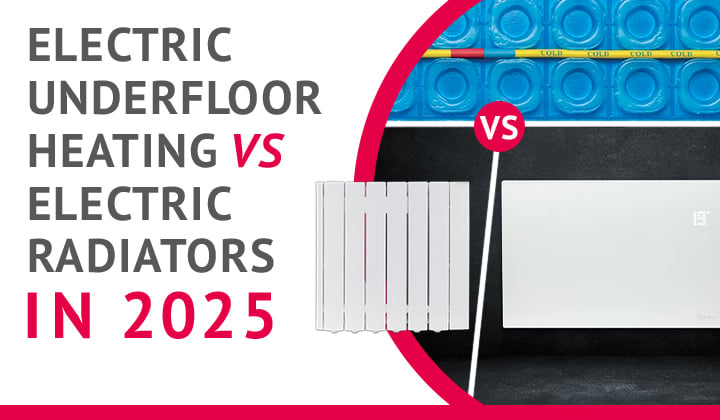
Electric heating is having a serious glow-up in 2025. Once seen as a backup or an afterthought, it’s now leading the way in energy-efficient home comfort. Smart thermostats, improved efficiency and a bigger focus on renewable electricity have made all-electric heating systems more attractive than ever.
But when it comes to choosing between electric underfloor heating and electric radiators, which one comes out on top? Both are clean, efficient and easy to install, but they deliver heat in very different ways. So, let’s turn up the insight and find out which option might work best for you.
 Think of it as invisible comfort. Electric underfloor heating transforms your entire floor into a large, low-temperature heat source. It works by gently radiating warmth upwards, heating the room evenly from the ground up. This creates a natural, consistent comfort that feels especially luxurious on chilly mornings — no more cold toes or huddling near a radiator.
Think of it as invisible comfort. Electric underfloor heating transforms your entire floor into a large, low-temperature heat source. It works by gently radiating warmth upwards, heating the room evenly from the ground up. This creates a natural, consistent comfort that feels especially luxurious on chilly mornings — no more cold toes or huddling near a radiator.
⭕Check Out The ThermoSphere Range⭕
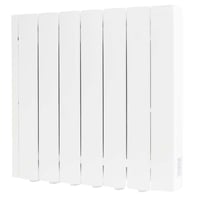 Electric radiators, on the other hand, heat air using convection and sometimes radiant elements. Warm air rises from the heater, circulates around the room and eventually settles into a comfortable equilibrium. They’re quick to warm up and can deliver targeted heat fast, perfect for those who like instant gratification.
Electric radiators, on the other hand, heat air using convection and sometimes radiant elements. Warm air rises from the heater, circulates around the room and eventually settles into a comfortable equilibrium. They’re quick to warm up and can deliver targeted heat fast, perfect for those who like instant gratification.
⭕Check Out The ThermoSphere Range⭕
Underfloor heating offers a comfort level that’s hard to beat. Because it uses radiant heat, the warmth is distributed evenly across the entire space, eliminating cold spots and maintaining natural humidity. Each room can be zoned with its own thermostat, giving you precision control — only heating the rooms you’re using, when you’re using them.
Electric radiators can also be zoned and independently controlled, especially when Wi-Fi controlled or smart thermostats are added. They respond faster to temperature changes, which makes them ideal for rooms you use intermittently — like a home office or guest bedroom.
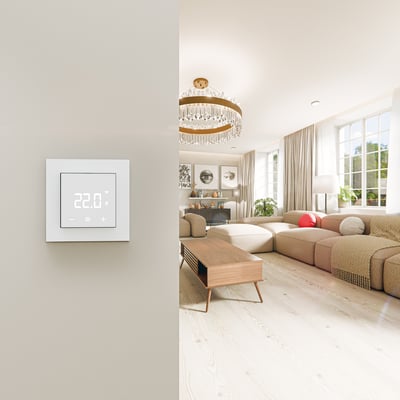 When it comes to energy efficiency, it’s less about which system is “better” and more about how it’s used. We recommend using a smart thermostat for both systems. Electric underfloor heating operates at lower temperatures (27–29°C) than radiators, meaning it uses less energy to maintain the same comfort level. Electric radiators heat up faster and are great for quick warmth but their heat all comes from one spot at the side of a room, so heat will be slightly uneven.
When it comes to energy efficiency, it’s less about which system is “better” and more about how it’s used. We recommend using a smart thermostat for both systems. Electric underfloor heating operates at lower temperatures (27–29°C) than radiators, meaning it uses less energy to maintain the same comfort level. Electric radiators heat up faster and are great for quick warmth but their heat all comes from one spot at the side of a room, so heat will be slightly uneven.
Both systems convert 100% of the electricity into heat at the point of use, making both options very efficient. It's important to note, underfloor heating tends to feel warmer for longer thanks to radiant heat and the thermal mass of the floor. For those using renewables — like solar PV — both systems can run virtually carbon-free, making them future-ready and sustainable options.
🌡️How To Run Your EUFH🌡️ 🔥Electric Radiators 2025🔥
Electric underfloor heating is installed beneath the floor surface. For new builds and renovations, it’s straightforward and discreet. Retrofitting is also easier than most people think, particularly with ThermoSphere’s ultra-thin mesh mats that add minimal floor height. Once installed, maintenance is virtually zero.
Electric radiators are the quicker install option. Simply wall mount or set up freestanding (depending on the model) and connect to power — often done in a matter of minutes. Maintenance is minimal too, mainly just occasional cleaning and ensuring vents are unobstructed.
♨️Oil Filled Radiator Installation♨️ ♨️Convector Panel Heater Installation♨️ ♨️Glass Panel Heater Installation♨️
♨️Mesh UFH Installation♨️ ♨️Ultimate UFH Installation♨️ ♨️Foil UFH Installation♨️
| Feature | Electric Underfloor Heating | Electric Radiators |
|---|---|---|
| Typical supply cost | £40–£90 per m² (kit only) | £150–£400 per unit |
| Installation cost | £40–£100 per m² (depending on floor type) | £150–£300 per radiator install |
| Heat-up time | 45–60 minutes | 15–30 minutes |
| Running cost | Lower due to radiant heat and zoning | Slightly higher per hour if used for long periods |
| Ideal for | Whole-room comfort, tiled floors or open-plan areas | Fast heating, smaller rooms or retrofits |
| Control options | Smart thermostats and zoning | Smart, Wi-Fi or manual control |
| Maintenance | None | Minimal |
 When it comes to electric underfloor heating, the key advantage is the luxurious, even warmth it provides across the entire floor — no more cold spots or chilly toes. It’s ideal for tiled bathrooms, kitchens and open-plan spaces. With fully zoned control, you can heat each area only when needed for precise energy use. The system also pairs seamlessly with renewable sources like solar PV, requires no maintenance and stays completely out of sight, keeping your interior design clean and uncluttered. The trade-off is a slightly slower heat-up time compared to radiators and installation does involve lifting the floor — though this is straightforward during renovations or new builds. It’s also worth noting that very thick carpets are not reommended, so flooring choice matters. Finally, the cost of electric underfloor heating for large areas can be a lot higher up front that electric radiators.
When it comes to electric underfloor heating, the key advantage is the luxurious, even warmth it provides across the entire floor — no more cold spots or chilly toes. It’s ideal for tiled bathrooms, kitchens and open-plan spaces. With fully zoned control, you can heat each area only when needed for precise energy use. The system also pairs seamlessly with renewable sources like solar PV, requires no maintenance and stays completely out of sight, keeping your interior design clean and uncluttered. The trade-off is a slightly slower heat-up time compared to radiators and installation does involve lifting the floor — though this is straightforward during renovations or new builds. It’s also worth noting that very thick carpets are not reommended, so flooring choice matters. Finally, the cost of electric underfloor heating for large areas can be a lot higher up front that electric radiators.
🔍Underfloor Heating Deep Dive🔎
 Electric radiators, on the other hand, offer near-instant heat and are brilliant for occasional-use rooms such as guest bedrooms or home offices. They come in a wide range of styles, sizes and finishes, are easy to install or reposition and can be a cost-effective solution for smaller spaces. They are suitable for both residential and commercial properties, this factor is another big selling point. However, they’re best suited to contained areas — in larger rooms, heat distribution can be less even. Some rely on convection, which can also create some air movement and dust circulation, not great for allergy sufferers. If left running continuously, they’ll use more energy than a zoned underfloor system.
Electric radiators, on the other hand, offer near-instant heat and are brilliant for occasional-use rooms such as guest bedrooms or home offices. They come in a wide range of styles, sizes and finishes, are easy to install or reposition and can be a cost-effective solution for smaller spaces. They are suitable for both residential and commercial properties, this factor is another big selling point. However, they’re best suited to contained areas — in larger rooms, heat distribution can be less even. Some rely on convection, which can also create some air movement and dust circulation, not great for allergy sufferers. If left running continuously, they’ll use more energy than a zoned underfloor system.
🔎Electric Radiators Deep Dive🔍
It’s the ultimate face-off in home heating: radiant comfort versus responsive control.
If your goal is all-encompassing warmth, sleek interiors and effortless efficiency, electric underfloor heating takes the crown. It transforms your floor into a gentle heat source that radiates evenly through the room, removing cold spots and keeping the air feeling fresh. It’s discreet — no bulky panels or visible hardware — and with smart thermostats, you can fine-tune each zone to perfection. Once installed, it’s virtually maintenance-free and works beautifully with renewable power, making it a futureproof choice for homes aiming to go all-electric.
But when speed and flexibility are key, electric radiators fight back hard. They’re quick to install, quick to heat and perfect for rooms that need independent control — think spare bedrooms, studies or loft conversions. Their upfront costs are typically lower and modern designs mean they no longer have to be hidden away; in fact, they can become a stylish feature in their own right.
In short, it’s less about which is better and more about which is better for you and your situation. Underfloor heating wins on efficiency and comfort; radiators shine when responsiveness and simplicity matter most. Both are low-maintenance, sustainable and fully compatible with the UK’s all-electric future. With ThermoSphere, whichever you choose, you’ll enjoy heating that’s simple, efficient and built to last — a win-win in our book.
⭕Explore the EUFH range⭕ ⭕Explore the electric radiator range⭕
Electric heating made easy
Contact us via the website or give one of the team a call on 01622 689440. Find out more about ThermoSphere by reading of one of our other blogs here.
If you want to find out more about some of the other fun stuff we've been up to, follow us on our social media:
LinkedIn: @thermosphere
YouTube: @thermosphere
Facebook: @thermosphere
TikTok: @_thermosphere
Instagram: @_thermosphere
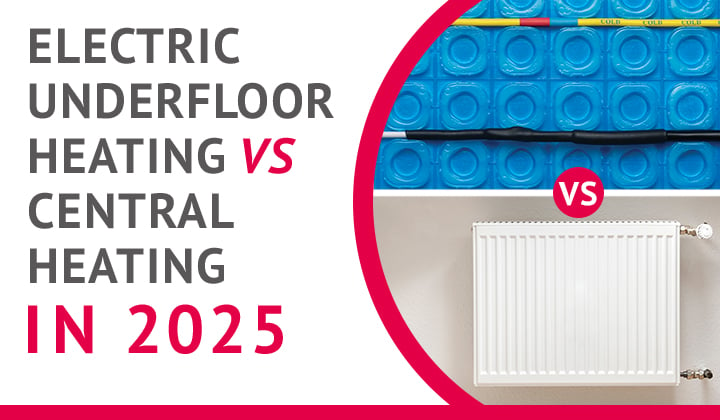
12 min read
For decades, gas central heating has been the go-to choice for UK homes — reliable, familiar and deeply ingrained in how we think about warmth. But...
.jpg)
8 min read
Electric heating has been on the march for a while now, but in 2025 it’s no longer the quirky alternative—it’s mainstream. More and more homeowners...
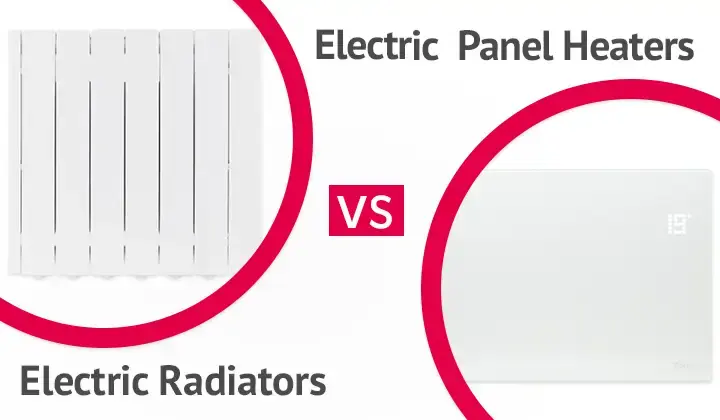
18 min read
If you’re in the process of looking into installing electric radiators or panel heaters for your next project, this article could be just the thing...